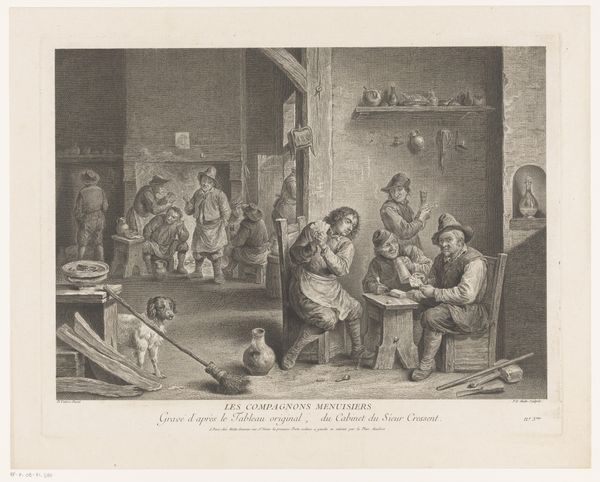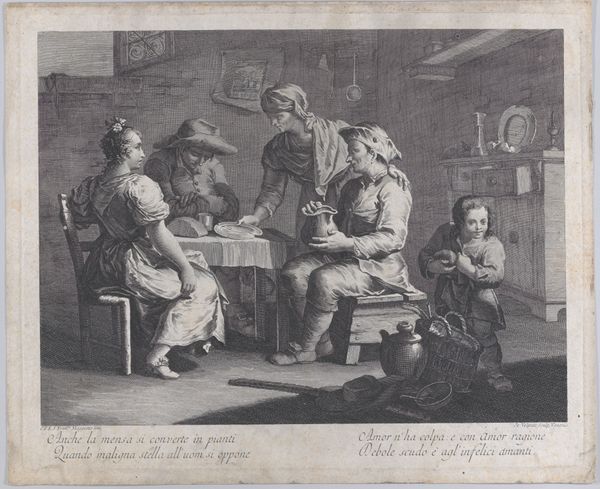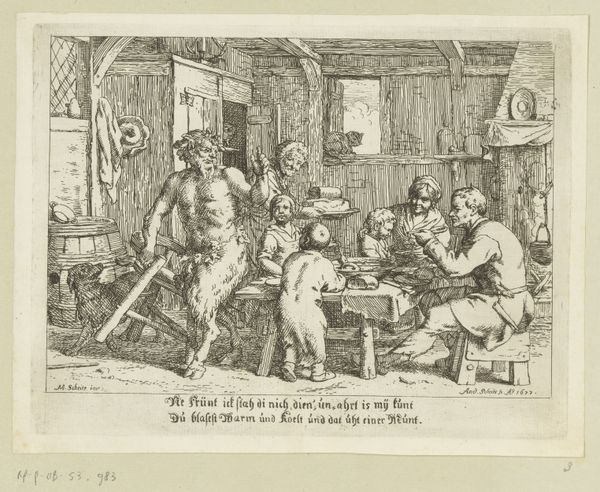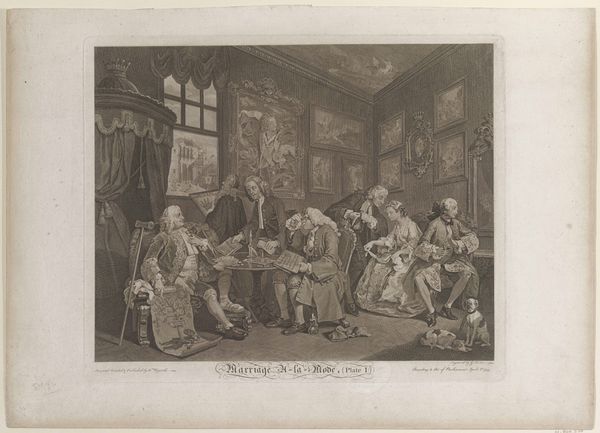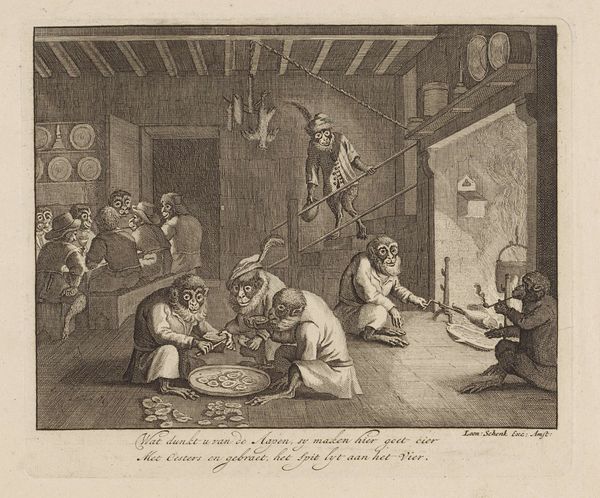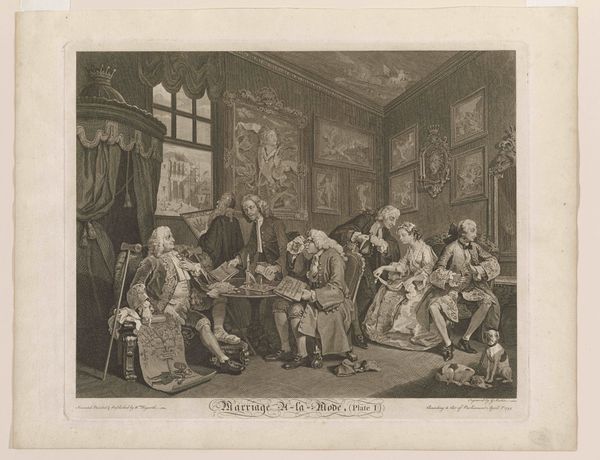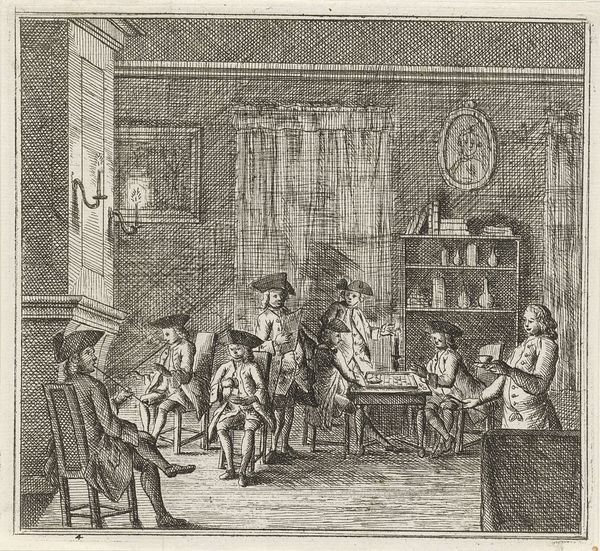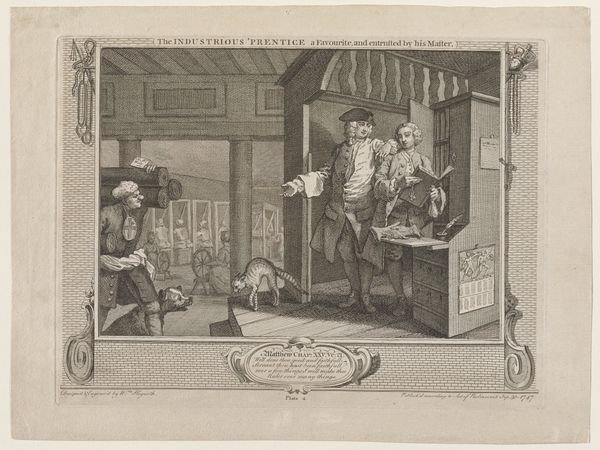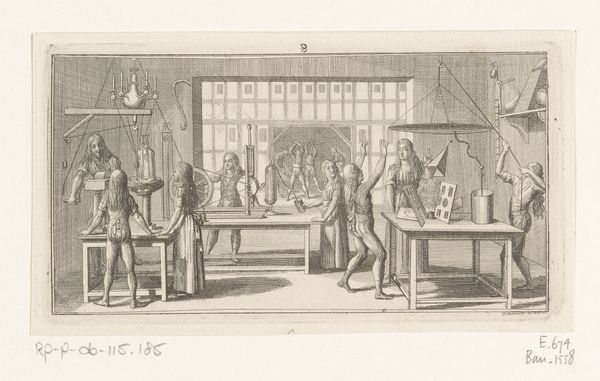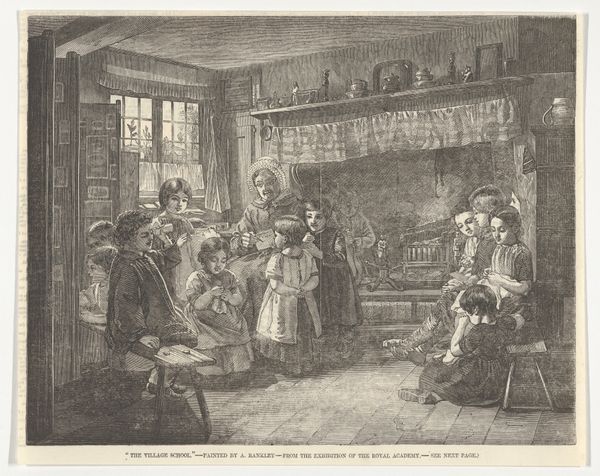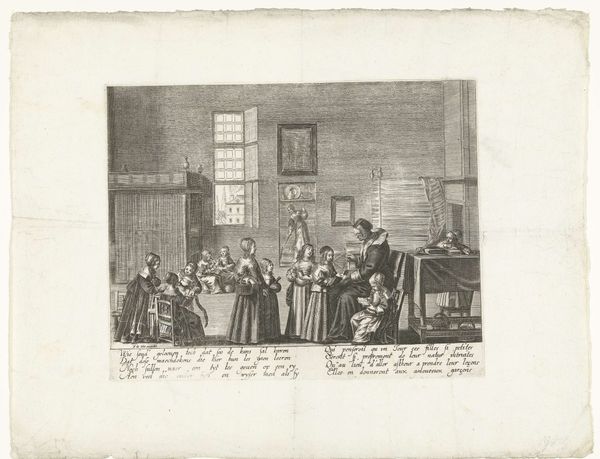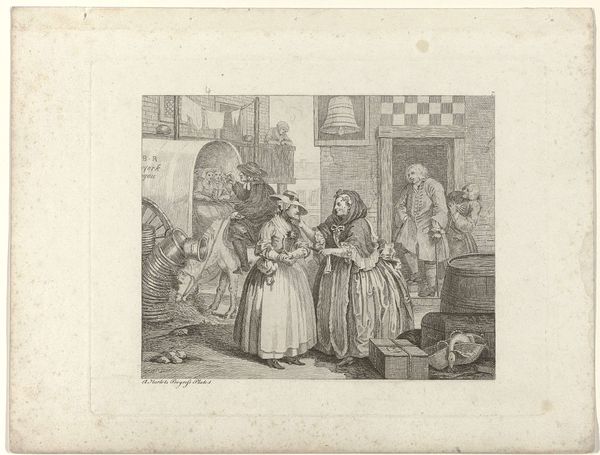![Razor's Levée, or Ye Heads of a New Wig Ad[ministration] on a Broad Bottom by James Sayers](/_next/image?url=https%3A%2F%2Fd2w8kbdekdi1gv.cloudfront.net%2FeyJidWNrZXQiOiAiYXJ0ZXJhLWltYWdlcy1idWNrZXQiLCAia2V5IjogImFydHdvcmtzLzA1OTZmMTE3LWUyNGQtNGQzNy1iN2JmLTc0MzhiOTQ2NjJkMi8wNTk2ZjExNy1lMjRkLTRkMzctYjdiZi03NDM4Yjk0NjYyZDJfZnVsbC5qcGciLCAiZWRpdHMiOiB7InJlc2l6ZSI6IHsid2lkdGgiOiAxOTIwLCAiaGVpZ2h0IjogMTkyMCwgImZpdCI6ICJpbnNpZGUifX19&w=3840&q=75)
Razor's Levée, or Ye Heads of a New Wig Ad[ministration] on a Broad Bottom 1783
0:00
0:00
drawing, print, etching, engraving
#
portrait
#
drawing
# print
#
etching
#
caricature
#
genre-painting
#
engraving
Dimensions: sheet: 10 7/8 x 15 7/8 in. (27.6 x 40.3 cm)
Copyright: Public Domain
Curator: Here we have "Razor's Levee, or Ye Heads of a New Wig Ad[ministration] on a Broad Bottom," a print made in 1783 by James Sayers. Editor: It's...darkly humorous, isn't it? A bit macabre. The overall impression is one of unsettling political theatre. I find myself focusing on the...severed heads. Curator: Exactly! This satirical piece critiques the political climate of the time. The "heads" represent prominent political figures, lined up in what appears to be a barber's shop or wigmaker's studio. Note the razor in the hand of the barber. Editor: And the man seated, holding what looks like a tankard...is he the "broad bottom" in question, some embodiment of stability perhaps? It’s fascinating how the artist employs caricature to deflate these powerful figures. Their status and perceived power made ludicrous. Curator: Indeed. "Broad Bottom" referred to a coalition government, an attempt to include various factions. Sayers cleverly uses the image of wigs – symbols of status and authority – to suggest that this administration is merely a collection of empty heads. A lot of symbolic capital for just...hair. Editor: I see echoes of the Roman tradition of displaying the heads of enemies… repurposed here for purely political and social commentary. The map hanging on the wall behind, along with documents, what could this refer to? Curator: Possibly England's fraught relations with France, which at that moment involved negotiations in the American Revolutionary War. Remember, this image emerges at a time of enormous shifts in political and social identities. It reveals cultural anxieties around the performance of power and its reliance on appearances. Editor: So the print serves as a biting critique of political maneuvering and the fragility of power itself? That symbolism of beheading… how readily empires collapse or fall to new management? I imagine that this image carried enormous weight back in 1783. Curator: Undoubtedly. Through this piece, Sayers tapped into deep-seated anxieties about political stability and leadership during a time of revolution. These images, by appealing to very base fears of control, manipulate emotions. Editor: Well, it’s given me a rather unsettling new lens to look at political cartoons, then and now. Curator: I find myself newly alert to how fleeting alliances and the superficialities of image can impact political legacies, both past and present.
Comments
No comments
Be the first to comment and join the conversation on the ultimate creative platform.
